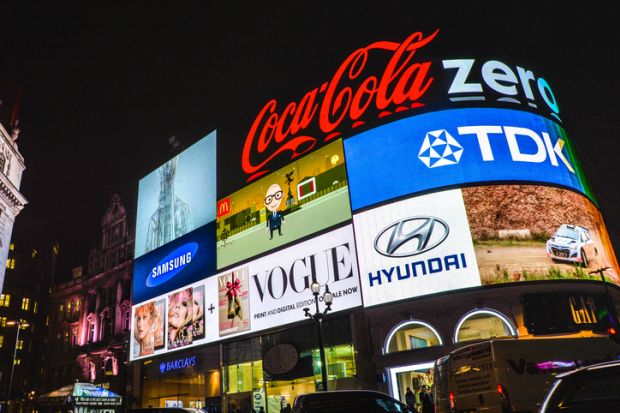As universities around the world face funding cuts and an increasingly competitive recruitment environment, they are coming up with increasingly creative ways to attract students and boost their brand.
Of course, these efforts don’t always go to plan. When Newcastle University reportedly applied for a new trademark – the Central University of Newcastle upon Tyne – it perhaps didn’t anticipate the ensuing hilarity that the acronym resulted in online.
And when the University of Bedfordshire came up with the risqué hashtag #pathtobeds for their clearing campaign, social media users could be forgiven for wondering what exactly they were advertising.
There is no doubt that marketing can be a tricky business – but when universities get it right, the impact can be huge.
Listen to students
Loughborough University made headlines in 2016 with its #LboroFamily campaign, where successful applicants received a personalised golden ticket as a welcome to the university.
According to Emma Leech, director of marketing and advancement at the university, a key part of a successful university marketing campaign such as this is to listen to the students themselves.
“I see a lot of examples of campaigns that have clearly been dreamed up by middle-aged hipsters in a studio, who don’t actually understand students or people’s emotions,” she said.
Although she admits to being middle-aged herself, her team often collaborates with students to get fresh ideas.
“We work in partnership with the student union,” she said. That helps us amplify messages, it allows us to get different takes on things, and it makes sure that the tech that we’re using is current and not something that everyone moved away from 18 months ago.”
The team also hires interns from within the university, she explained: “I am absolutely committed to talent development, so we use a lot of our own graduates.”
Be authentic
A different approach was taken by Georgetown University, whose award-winning social media programme “Georgetown Stories”, launched in 2014, featured first-person video blogs recorded by 11 undergraduate students throughout the academic year.
McKenzie Stough, a digital media associate for the university, felt that this approach succeeded because it presented an “authentic” view of the university experience.
“Our storytellers document their everyday life, capturing the subtleties of the student experience in Georgetown that don’t traditionally gain a lot of marketing attention,” she said.
“They broadcast the mundane: all-nighters in the library, applying for internships, decorating your dorm room or working out in the campus gym. Their unfiltered selfie-style videos resonate with our most important audiences because they’re so real.”
Being “authentic”, she said, also means engaging with a student audience on their level through social media.
“Use the platforms they’re using, and use them the way your audiences are. Speak to them the way they speak to each other. Find the people to whom your audiences relate, and ask them to share their stories on your behalf,” she said.
Go against your marketing instincts
While it may seem counterintuitive, Ruth Arnold, director of strategic projects and public affairs at the University of Sheffield, advised aspiring university marketers to try going against their marketing instincts.
In 2013, she helped to launch the #WeAreInternational campaign, which celebrated the contribution of overseas students.
“Although it has been praised as a marketing campaign, in fact #WeAreInternational never was that. Marketing is typically motivated by competitive advantage. This was about a common identity,” said Ms Arnold.
The campaign was created as a reaction to the growing mood of xenophobia in the media and political debate.
“We felt a need to tell the positive story, to say why international staff and students were so important. I don’t think we realised then just how big an issue this would become, and not just for universities,” Ms Arnold said.
“To amplify the message, we knew we had to work with others, and that meant going against the usual marketing instincts – no logos, nothing to identify our specific university. Having said that, we have used every tool in the book to try to get a message across.”
Engage with your audience
Engagement was crucial to the University of Melbourne’s award-winning Made Possible by Melbourne campaign, which celebrated the institution’s research endeavours in a free exhibition around the city.
“By turning the city of Melbourne into an interactive exhibition highlighting 14 key research projects and their contribution and impact, we were able to reach out to people in a new and innovative way,” said Andrew James, associate director of marketing and communications at the institution.
To bring the project to life, a series of public events were held in Melbourne’s central business district, including a “world-changing cafeteria”.
“Visitors could eat a bowl of rice pudding and learn about our new rice with increased levels of iron to tackle ‘hidden hunger’,” he said. “Water bottles branded with tongue-in-cheek descriptions such as ‘Fresh Festering Swamp’ or ‘Clear Contaminated Springs’ could be filled to learn about our innovation that can turn any water into drinking water.”
Register to continue
Why register?
- Registration is free and only takes a moment
- Once registered, you can read 3 articles a month
- Sign up for our newsletter
Subscribe
Or subscribe for unlimited access to:
- Unlimited access to news, views, insights & reviews
- Digital editions
- Digital access to THE’s university and college rankings analysis
Already registered or a current subscriber? Login








